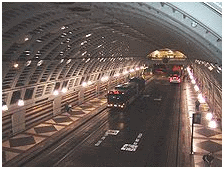 |  |  |  |  |
|





|
Bus Rapid Transit is officially better than trams and trains20 January 2012 - An independent study on Bus Rapid Transit (BRT) in US cities confirms BRT as the best mobility solution over rail-based options for costs, flexibility and efficiency. City authorities should make this smart move!
Bus rapid transit (BRT) combines the flexibility of buses with the speed and priority of light rail, but at a fraction of the cost of rail according to an independent study on the implementation of the BRT in selected US cities, recently published by the Institute for Transportation and Development Policy (ITDP).
BRT has advantages that no politician – local or national – could afford to ignore in today’s hard budgetary times and race for sustainable transport solutions:
However, in order to be successful, BRT systems have to be of highest quality (service, reduced travel time, high frequency) in order to attract car-users, and produce a shift in travel behaviour. The authors argue that BRT needs to become a cornerstone of American mass transit system development and policy. |


 See
See